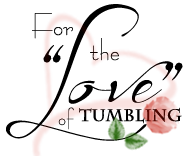Structure is good for coaches and athletes and for a productive workout. All good practices start with a plan for what you want to achieve. Too many times we coach by the beat of our pants just letting whatever happens happen.
The first step to a good practice is to warm up the body sufficiently to eliminate injuries. This can be done by doing any cardiovascular activity you wish. 28 laps around a 9 panel floor is 1 mile. I generally have athletes run 1/4 to 1/2 mile at the beginning of practice and more in the summer when we are just building up our teams. You can also do punches or rope jumping or suicides- any activity to raise the heart rate thus warming up the whole body.
The second step is to either stretch or condition the body. I choose to condition because it is hard to discipline ourselves at the end of practice to stop and make time for conditioning. We do exercises for the upper body, lower body, core, plyometrics and balance and stability. You should do the core engagement exercises first then begin extremity work. I try to do two from each area.
The third step is to warm up entire body with some five to ten second stretches. Do not do the long flexibility stretches (45- 60 sec.) now. It will diminish your explosiveness for the rest of practice. Long stretches should be done at the end of practice an example would be splits.
Our warmup stretch consists of the follow:
- Stretches for the neck
- stretches for the shoulders
- Stretches for the upper torso
- Stretches for the wrists
- Stretches for the ankles
- Stretches in pike and straddle
- Stretches for the “IT” band stretch and model stretch
- Butterfly stretch
- Stretches I call the seal stretch and cat stretch
The fourth step would be a jump workout.
The fifth step would be tumbling- Basics first then diagonal tumbling, While diagonal tumbling have various drills and conditioning skills specific to tumbling so the athletes are not waiting in a line. It is a waste of their time and money.
The sixth step is to either do routines or work stunting, baskets and dance skills. Always break down skills into manageable units and make perfection of execution the goal for every part before adding another one. Remember every skills has a finishing point such as the set our from the cradle in stunting and do not let the athletes be sloppy in the execution of these parts. Require tight disciplined bodies in dress and behavior from the beginning.
The seventh step is to do flexibility exercises of various types (static, dynamic, resistance, PNF). These stretches should be done for 45 to 60 seconds.
The last step would be to have a team meeting or huddle and do some kind of bonding and a little sports psychology segment. This should be very positive so the athletes leave with a good feeling of accomplishment for the day.
The time for each step will vary depending on where you are in your season. At the beginning of the season you should spend more time on conditioning and skill development. Later on you may need more time to clean up routines or work out a problem in the routine.
Make sure you have a lesson plan in mind when you walk in the gym. Otherwise the athletes may end up being in charge.
Make practice fun. Do something silly at times. This should be a kid’s passion and not drudgery for them. Remember every kid is a winner and we must figure out a way to make them a winner. Putting fourth any effort is successful. Make them responsible through memory and behavior. Make listening a priority- speak softly. Challenge athletes to repeat instructions to make sure they understand. Set and enforce consequences for undesired behaviors from the beginning of the year. Remember fun is for everyone even you.
